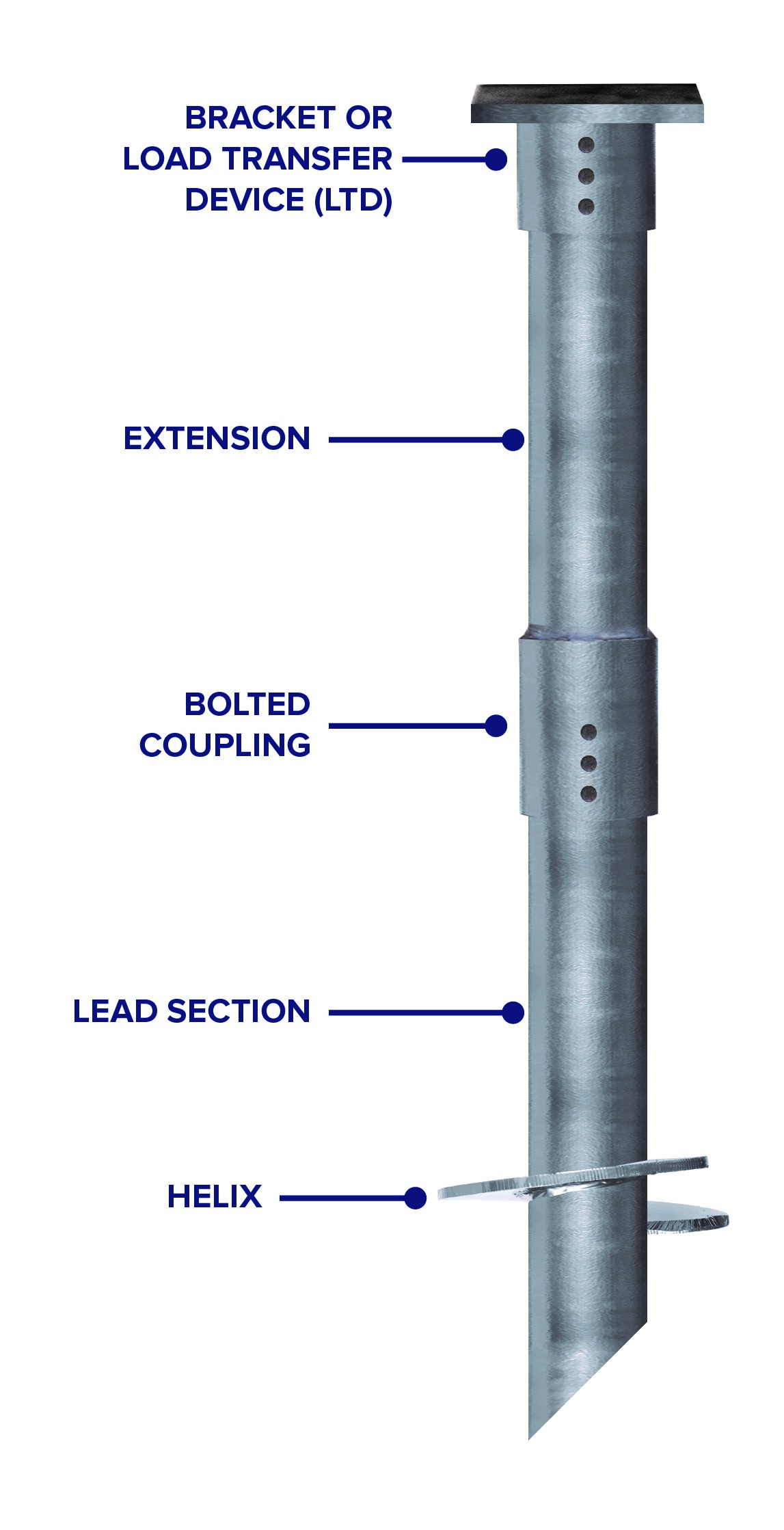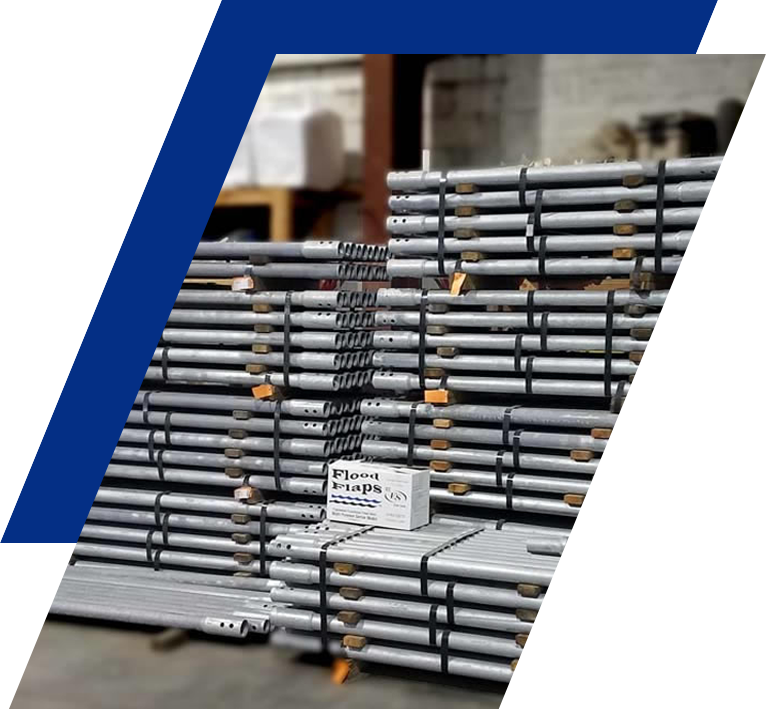Helical Piles
Helical Piles & Their Uses
Helical Piles are used to support structural foundations. Piles are driven to a depth where the ground is bearing, giving support to the structure.
We are happy to answer any questions you may have about helical pile uses, installations and cost.

What are Helical Piles?
The unit is called a helical pier if it resists compressive loads, which are usually downward. It is called a helical anchor if it resists tensile loads, which are usually upward or inclined. Many helical units function as both piers and anchors.
A helical unit is installed by simply screwing it into the ground. The central shaft may be round or square and it may be hollow or solid. Hollow (pipe shafts) are often preferred, because they provide a greater section modulus for the same cross-sectional area of steel. Pipe shafts, as compared to solid shafts, generally provide greater resistance to installation torques and buckling under compressive loads.
A typical helical unit is shown to the left. It consists of a central steel shaft, to which can be attached one or more steel helices. The central shaft can be lengthened by adding extension pieces as necessary.
Pipe shafts range anywhere from 2 7/8”” to 36” in diameter, and helices range anywhere from 5” to 48” in diameter and are seldom less than 3/8” thick.
Experience and theory have combined to suggest that the preferred spacing between multiple helices is equal to 3 helix diameters of the preceding helix.
The final component to the helical unit is the Load Transfer Device (LTD). This is used to transfer the tension or compression load from the structure to the helical unit.
Simply put, the helical unit transfers tension or compression load to competent soil strata below incompetent soils.
Why Use Helical Piles?
Most foundation problems occur due to change in the soil structure around your building or home. The soil conditions underneath your building or home may shift or settle depending on terrain and/or water runoff around your building.
The correct and level and existing foundation
To support sagging, bending, bowing or buckling foundation walls
To set a solid base on which to build a new foundation or deck platform
For swimming pool stabilization
As anchors for large tents or vertical poles
How are Helical Piles Installed
Helical piles are screwed into the ground. By keeping the helical plates at the same angles along the shaft, minimal soil disturbance occurs.
Helical piles can be installed using small equipment in small spaces.
The rotary action of installing helical piles does not produce ground vibrations. There is very little soil brought to the surface, therefore there are no extra dirt removal costs. Little space is needed to install a helical pile.

